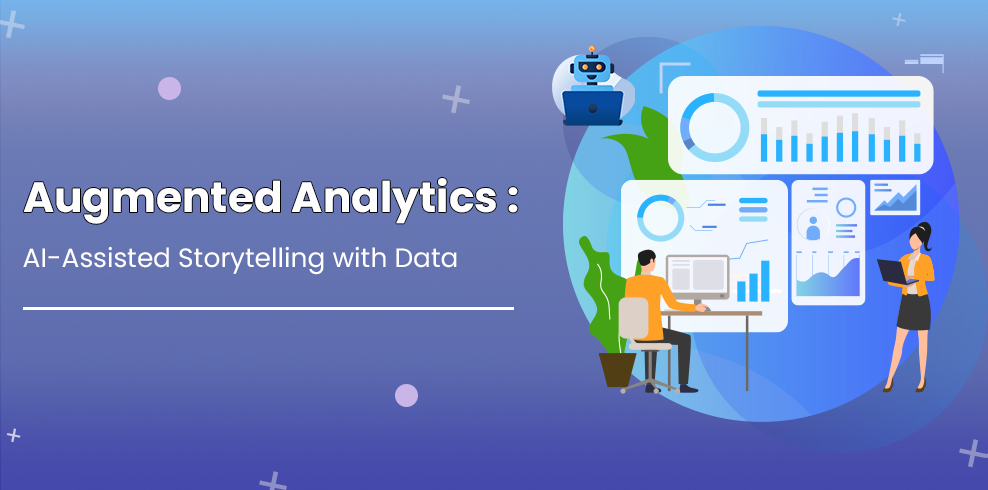Maximising Your Marketing Efforts with GA4 Audiences
Mar 10, 2023
4 Minutes Read
By Ansuya Kachroo

As businesses continue to collect more data about their customers, it's becoming increasingly important to use this data to make informed marketing decisions. One of the most powerful tools for leveraging customer data is Google Analytics 4 (GA4), the latest version of Google's web analytics platform.It comes with many new features and improvements to help marketers better understand their audience and improve their digital marketing efforts.
One of the most powerful features of GA4 is its audience capabilities, which allow marketers to create and leverage custom audiences for their marketing campaigns. In this blog post, we'll explore how to leverage GA4 audiences to improve your marketing efforts.
- Define Your Audience
The first step to leveraging GA4 audiences is to define your target audience. This involves identifying the demographic, psychographic, and behavioural characteristics of your ideal customer. Some of the key factors to consider include age, gender, income level, education level, interests, and purchase behaviour.
- Create Custom Audiences
Once you have defined your audience, the next step is to create custom audiences in GA4. GA4 allows you to create audiences based on a variety of criteria, including user behaviour, demographic data, and more. If you are new to GA4 and want to know how to create audiences, take a quick look here. Some of the most common types of audiences you can create.
- Remarketing audiences: These are audiences of users who have visited your website or interacted with your brand in some way but have not yet converted. Remarketing audiences can be used to retarget users with ads or other marketing messages to encourage them to convert. Example : One common use case here is users who have abandoned their shopping carts on your website. By creating an audience of users who have added items to their cart but haven't completed the checkout process, you can target them with personalised ads or email campaigns encouraging them to come back and complete their purchase.
- Lookalike audiences: These are audiences that are similar to your existing customer base. GA4 uses machine learning to analyse your existing data to identify common characteristics among your customers and create a lookalike audience based on those characteristics. Example : If you have a blog site and users who subscribe it generally fall in the age group 20-25 and are into entertainment and sports content then you can create an audience based on this and target the users which either fall in one of these conditions are both.
- Custom audiences: These are audiences that you create based on specific criteria as per your requirement, such as users who have added items to their cart but have not yet checked out, or users who have viewed a particular page on your website. Example: For example, if you notice that users who spend more than five minutes on your website are more likely to convert, you can use this insight to optimise your website for longer engagement times. Or, if you notice that users who complete a certain goal are more likely to become loyal customers, you can target this segment with loyalty programs or other retention efforts.
- Analyze Audience Data
Once you have created your audiences, the next step is to analyse the data to gain insights into your audience's behaviour. GA4 provides a range of audience reports that allow you to see how your audience is interacting with your website and your marketing campaigns. Some of the key metrics to look at include:
- Acquisition: How are users finding your website? Are they coming from search engines, social media, or other sources?
- Behaviour: What are users doing on your website? Which pages are they visiting, and how long are they staying on each page?
- Conversions: How many users are converting, and what is the conversion rate? Which marketing channels are driving the most conversions?
Finally, once you have analysed your audience data, the next step is to optimise your marketing campaigns based on your findings. This might involve adjusting your targeting criteria to better reach your ideal audience, optimising your ad copy and creative to better resonate with your audience, or testing different marketing channels to see which ones are driving the most conversions.
Conclusion
GA4 audiences are a powerful tool for businesses looking to leverage their customer data to inform marketing decisions. You can create custom audiences based on specific criteria, businesses can better target ads, personalise website content, and improve overall customer engagement. By following the steps outlined in this blog and experimenting with different audience criteria, businesses can unlock the full potential of GA4 audiences and drive better results from their marketing efforts.


